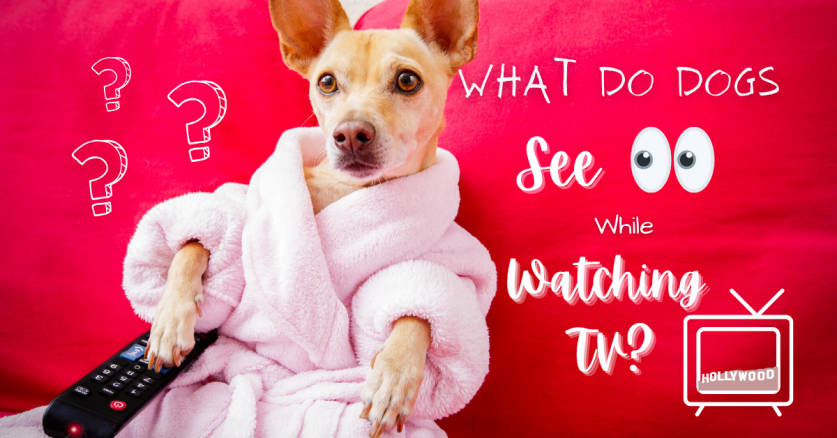
What Dogs See When They Watch TV?
Posted Jun 28, 2021 in Fun Dog Stuff
Sometimes when you’re binge-watching your favorite shows, you might notice that Fido seems just as interested in the screen as you are. You might find it surprising that dogs can actually notice and understand the pictures they see on a TV (to an extent). In fact, a 2013 study showed that dogs can distinguish other canines from humans on a screen. Plus they can even group them into categories using visual clues. Dogs are known for being social animals. So, they’re actually drawn to identifying their own species on a television more than any other image. But what all can your furry friend really see and understand on a TV, and how do they perceive it? Let’s find out!
Depth Perception & Depth Sensation
As humans, we experience depth perception as the way in which we distinguish our 3-dimensional world from the 2-dimensional images received by the retina. On the other hand, our canines experience more of a depth sensation. This allows them to locate objects that they’ve seen. Their eyes can also work together in a state of fixation where two different images from each of their eyes come together and form a depth sensation. This is important because it helps your furry friend understand that the objects they see on the TV aren’t actually in the same room with them. However, that doesn’t mean it’ll make them any less curious. Which is why they might seem so memorized by the screen.
Fido’s Field of View
A field of view describes how different parts are seen at any given point in time along a visual plane. Dogs have a very narrow field of view and depend more on the binocular overlap (or depth sensation) to visually locate and isolate prey. Animals of prey have almost a 360-degree field of view. While your canine companion only has a maximum field of view of 240 degrees. Depending on your furry friend’s field of view, it can cause them to be more attracted to TV programs than other dogs. Although, once Fido understands that there’s nothing actually there – it could lead them to lose interest. But that all depends on your pup and their specific breed.
Detecting Motion
Our pups have a lot fewer cones in their eyes than we do. Therefore our eyesight is much more sensitive to the movement of bright lights. Since our furry friends have much fewer cones, they’re more sensitive to lower light situations. Fido is also much more capable of identifying a moving target. And can actually hone in on moving objects at a farther distance better than stationary objects that are closer. This extraordinary ability to monitor movement is another reason that your pooch might be obsessed with the TV. While they might not have a great understanding of what exactly is going on, they can pick up on the movement and action taking place on the screen.
With newer television models coming out every year with better and better definition and image appearance, your pooch will only be able to better binge TV with you.